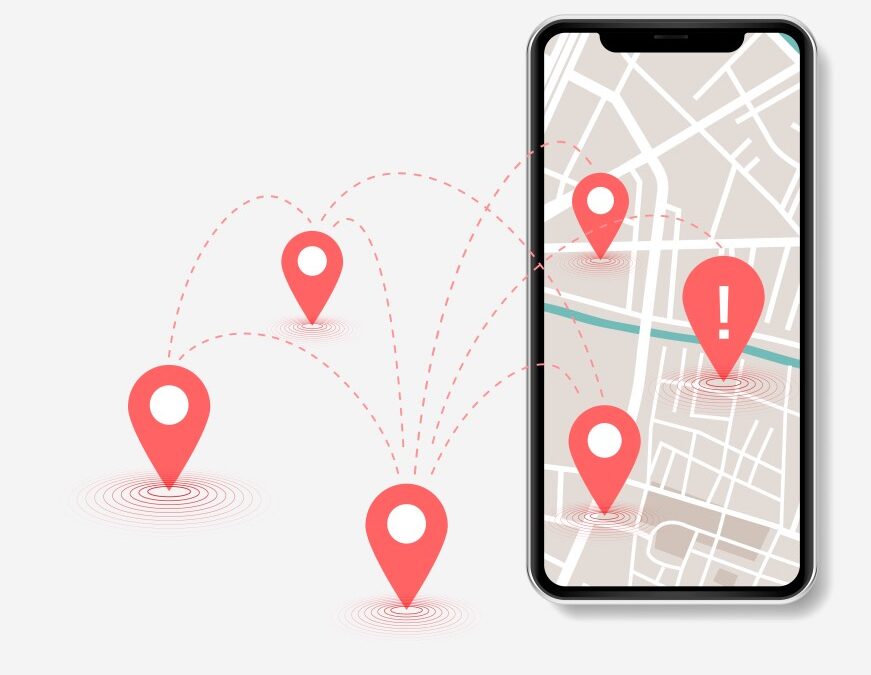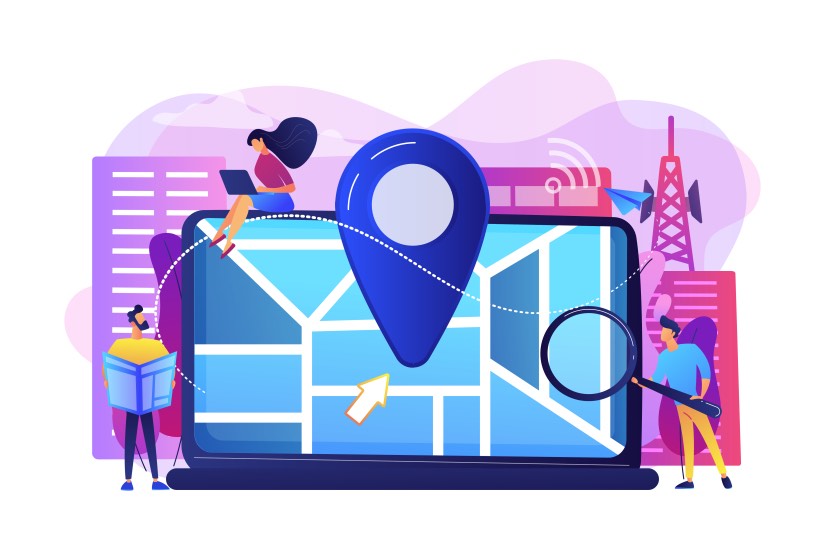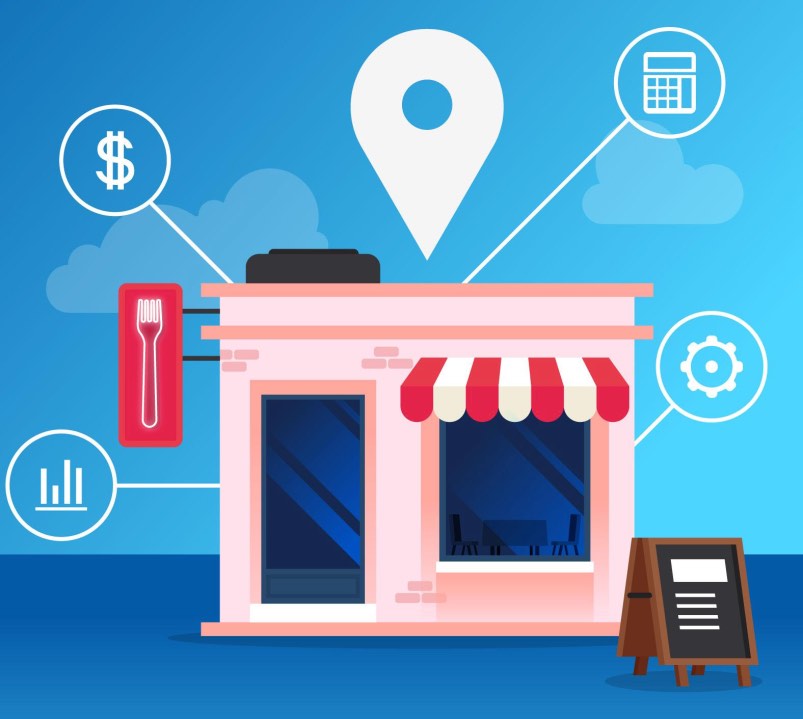When it comes to marketing your business, you have a lot of choices to make. You need to decide what kind of message you want to use, who you want to target, and how you want to reach them. Two of the most popular ways to target customers are geofencing and geotargeting. But what’s the difference between the two, and which is right for your business? Let’s take a closer look.
What is Geofencing?
Geofencing is a type of location-based marketing that uses GPS technology to target customers who are within a certain radius of your business. Local businesses can set up geofences around their stores, offices, or other locations to target nearby customers by sending promotional emails, security alerts, text messages, app notifications, or displaying Google ads.
For example, let’s say you own a coffee shop. You could set up a virtual fence around your store so that when customers come within a certain radius, they would receive a push notification on their mobile devices with a coupon for a free coffee.
Geofences can be as small or large as you want, and you can target as many or as few customers as you like. Utilizing cellular data, GPS, Wi-Fi, or RFID (Radio Frequency Identification), Geofencing technology develops a virtual fence around any area you want to target on the map. Ideal customers who are exiting or entering the virtual fence will receive notifications or promotional messages on their mobile devices.
What is Geotargeting?
Geotargeting is a type of marketing that targets customers based on their location as well as additional information to customize the ads they view. It is more specific than geofencing because it takes into account not only where customers are, but also who they are, what they like, and what they’re interested in. For example, a clothing store could use geotargeting to target female customers who live within a certain radius and who have expressed an interest in fashion. The store could then send these customers promotional emails or ads for items that are on sale or that they might be interested in.
Digital marketers develop a personalized target audience by identifying and analyzing a variety of factors including:
- Geographic location
- Demographics
- Interests
- Behaviors
This data is then used to create ad campaigns that are more likely to resonate with the target audience. Geolocation marketing involves sharing relevant advertising messages and information to the appropriate or target audience. When this kind of advertising strategy is practiced consistently, the returns are usually high. The business owners or advertisers can engage in this form of advertising campaign to boost their conversion rates, and consequently, their sales.
Types of Geotargeting
Geolocation technologies are constantly evolving, and new types of geotargeting are being developed all the time to make sales targeting much more effective. Though it does not provide exact location tracking like GPS, it gives a general idea of where the user is. The main types of geotargeting are as follows:
Advanced Geographical Targeting
Advertisements are served to users based on their current location as well as their past locations. For example, if a user has previously searched for restaurants in New York, they may see ads for New York restaurants when they are in London.
Hyperlocal Targeting or Location-Based Targeting
Marketing in a specific location that is very small, such as a single city block or even a specific store. For example, a clothing store could reach customers who are within a certain distance of the store.
Local Targeting
Reaching users in a specific city, state, or country. For example, a business could target potential customers within the same city region.
Do you want to boost your sales through location-based marketing?
Contact Growth Hackers
What Are The Functions Of Geofencing?
Geofencing is utilized in several areas including retail, real estate, automotive, and event marketing. Some of the main functions of geofencing are as follows:
Time tracking
Geofencing can be used to track the time employees spend at certain locations. For example, a construction company could use geofencing to track how long its employees are on the job site.
Employee safety
This technology can also be used to ensure employee safety. For example, if an employee is working in a remote location, the company could set up a geofence around the area to receive notifications on the mobile device if the employee leaves the designated area.
Digital Marketing and advertising
It can be used to target customers with special offers and discounts. For example, a grocery store could set up a geofence around its store to send notifications to local customers about special deals.
Collecting information about customers
Geofencing can be used to collect information about customers, such as their location, how often they visit certain locations, and what times of day they are most likely to be in certain areas. This information can be used to create more targeted local marketing campaigns.
Parental control
Parents can use geofencing to set up virtual boundaries around their children’s school or daycare. But, what is parental control? Usually, the term applies to restricted device usage for children. However, in this context, parents can use geofencing. They will then receive notifications if their child leaves the designated area.
Smart home control
The technology can be used to control smart home devices, such as lights, thermostats, and security cameras. For example, a user could set up a geofence around their home so that the lights turn on when they arrive home and turn off when they leave.
What Are the Benefits of Geotargeting?
Geotargeting is an effective way to reach a target audience with relevant information. By taking into account factors such as location, demographics, and interests, businesses can create ad campaigns that are more likely to resonate with the target audiences. Some of the main benefits of geotargeting are as follows:
Increased relevance
Geotargeting ensures that your ad is relevant to the user’s location, making it more likely that they will be interested in what you have to say.
Improved click-through rates
If your ad is relevant to the user, they are more likely to click on it. This can lead to increased traffic and conversions for your business.
Lower cost
By targeting a specific audience, you can avoid wasting money on ads that are not relevant to your target market.
Improved brand awareness
Geotargeting can help you reach a larger audience with your ad campaigns, which can lead to improved brand awareness and recognition.
Retarget potential customers
Geotargeting can help you reach users who have previously shown an interest in your product or service by displaying the same ad to them again. This allows you to retarget potential customers and convert them into paying customers.
Improved return on investment
By targeting your ad campaigns more effectively, you can improve your return on investment and get more bang for your buck.
Geofencing Vs. Geotargeting
Both geofencing and geotargeting are powerful location-based advertising tools that can be used to reach a target audience. Here are the key difference between geofencing and geotargeting:
Geofencing offers a hyper-relevant ad experience as it allows businesses to send highly personalized messages to users based on their current or physical location data. Geotargeting, on the other hand, offers a more customized advertisement experience as it allows businesses to send targeted or personalized messages to users based on demographics, behaviors, interests, and location.
Geofencing is less detailed than geotargeting and is best used for large geographic areas. Geotargeting is more specific and can be used for smaller geographic areas. Geofencing produces fast sales and conversions while geotargeting is more focused on brand awareness and building long-term relationships with customers.
Geofencing can be used by any business that wants to target a specific geographic area. It is especially useful for brick and mortar or traditional business owners, advertisers, and event agencies. Any business that wants to target a wide geographical location like a country, city, or district with its marketing or advertising campaigns can benefit from geotargeting. This includes businesses of all sizes, in all industries, and with all kinds of marketing goals.
When To Practice – Geofencing Vs. Geotargeting?
Now that we’ve gone over the key differences between geofencing and geotargeting, let’s look at geofencing geo-targeting purpose:
Marketing Use Cases of Geofencing
Digital advertisers utilize geofencing to promote their products or services to users who are in specific locations. It is recommended to use geofencing if:
1. Your goal is to drive sales and conversions
Geofencing is an effective way to reach potential customers who are near your store or office. For example, if you are running an in-store sale or promotion, you can use geofencing to send a notification to users who are within a certain radius of your store. It aids in increasing foot traffic and can lead to more local sales and conversions.
2. You have a brick-and-mortar business
If you have a brick-and-mortar business, geofencing is probably your best option. Geofencing allows you to draw a virtual perimeter around your store (or stores) and target consumers who are within that perimeter. When the business is promoted on online advertising platforms, it would only be served to people physically near the store.
Reach your target customers today and drive more sales with geofencing and/or geotargeting!
3. Your goods or services cater to a wide range of people
If your product or service can be used by anyone, regardless of age, gender, or interests, geofencing is a good option. For example, if you own a restaurant, you can use geofencing to target customers who are near your location.
4. You want to attract your competitor’s customers
You can use geofencing to target potential customers who are near your competitor’s store.
Marketing Use Cases of Geotargeting
Geotargeting is an effective way to reach customers who are in a specific demographic, behavior, interest, or location. It is recommended to use geotargeting if:
1. You have a global audience
If you want to reach potential customers who are located all over the world, geotargeting is your best bet. Geotargeting allows you to target consumers in specific countries, states, or cities.
2. Your services or products are not location-specific
If your product or service can be used by anyone, regardless of location, geotargeting is a good option. For example, if you own an online store, you can use geotargeting to target potential customers who are located in specific countries.
3. Your customers belong to a particular niche
Geotargeting helps in creating personalized content, ads, and deals for this group of people. For example, if you are targeting customers who are parents, you can use geotargeting to send them ads and deals that are relevant to their interests. There are high chances for them to pounce on the offer because it is personalized and relevant to them.
4. You want to expand your business
Geotargeting is a good way to reach potential customers in new markets. For example, if you are expanding your business to a new city or specific geographic location, you can use geotargeting to target potential customers who are located in that city. You can run advertisements, send emails, or even offer coupons to these potential customers and increase brand awareness.
Final Thoughts About Geofencing Vs Geotargeting
As you can see, there are benefits to both geotargeting and geofencing. And really, the best way to determine which one is best for your business is to test out both methods and see which one generates the best results. Geotargeting may be the better option because it’s less expensive and easier to implement. But geofencing is definitely worth considering if you want to take your marketing efforts to the next level.
Growth Hackers is a modern Google ads agency helping businesses from all over the world grow. There is no fluff with Growth Hackers. We help entrepreneurs and business owners reach their target customers with geofencing or geotargeting, generate qualified leads, optimize their conversion rate, gather and analyze data analytics, acquire and retain users, increase sales and productivity. We go further than brand awareness and exposure. We make sure that the strategies we implement move the needle so your business grow, strive and succeed. If you too want your business to reach new heights, contact Growth Hackers today so we can discuss about your brand and create a custom growth plan for you. You’re just one click away to skyrocket your business.









